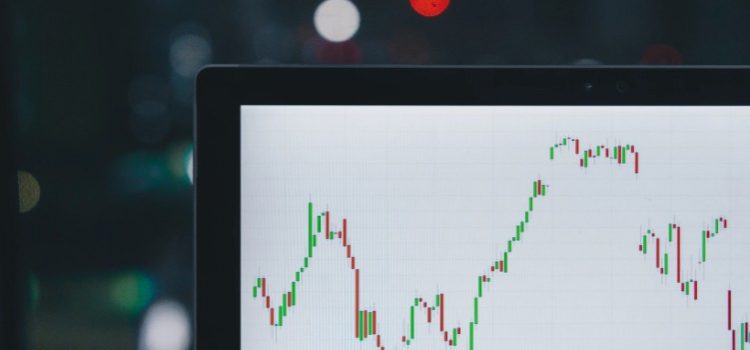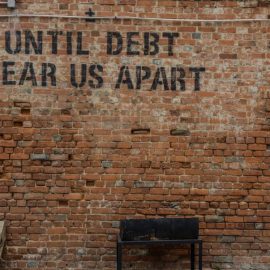

This article is an excerpt from the Shortform book guide to "Flash Boys" by Michael Lewis. Shortform has the world's best summaries and analyses of books you should be reading.
Like this article? Sign up for a free trial here .
What are the top high-frequency trading strategies? Why are they unethical to practice when buying and selling stocks?
If you have an interest in trading stocks, the first thing you should know is how to do it ethically and responsibly. That being said, Michael Lewis in his book Flash Boys details high-frequency trading strategies that disrupt the market’s level playing field.
Below we’ll explore the six high-frequency trading strategies that you shouldn’t practice if you’re looking into investing in the stock market.
What Is High-Frequency Trading?
Lewis describes high-frequency trading (HFT) as a type of electronic trading platform that uses automated computer algorithms to very quickly buy and sell large quantities of stocks. High-frequency (HF) traders and firms own these high-powered computers and algorithms. These HFT algorithms gather market data and use this information to buy and sell stocks, completing this process in microseconds, or one-millionth of a second, thus using a different strategy than long-term buy-and-hold investing positions. This speed advantage makes HFT algorithms faster than any human trader, giving them a powerful edge over traditional investors and traders by enabling them to accrue billions of dollars through HFT trades that traditional investors and traders can’t.
High-Frequency Trading Strategies
Lewis argues that certain characteristics of an electronic-based stock market allowed high-frequency traders to exploit individual investors. We’ll explore six specific high-frequency trading strategies that give HF traders an unfair advantage, allowing them to profit off the market in ways that are unavailable to regular investors.
Strategy 1: Using Speed
Speed is a crucial factor in stock trading. Traders who can lower their latency times, or the time between sending and receiving a signal about market data or a stock order, have an advantage over other traders.
Latency times can differ between exchanges and investors depending on how close to an exchange an investor physically is, since the further the electric signal has to travel through wiring, the longer it takes to execute an order. HF traders work so quickly that they can buy or sell orders in microseconds, so if a stock has changed its price on one exchange but there’s a lag of fractions of a second before it changes its price on another exchange, the HF trader can take advantage of that difference and make a risk-free profit.
Because of this almost-instantaneous purchasing power, HF traders can detect and act upon an order placed by a regular investor and profit off the market movements prompted by that order, lowering the profit for that regular investor.
Strategy 2: Using Dark Pools
The rise of electronic trading allowed for the development of dark pools—private stock exchanges set up by large banks where buying and selling orders can be executed separately from the wider market. Since dark pools are private, banks don’t have to immediately report to the public what happens inside their dark pool. Because of this, traders outside the dark pool have access to less information than traders within the dark pool, giving the latter the ability to not only move faster on pricing changes, but also to anticipate them. HF traders profit from this discrepancy in information in ways regular investors can’t.
Strategy 3: Using Rebates
Electronic trading led to changes in the rebate system. Rebates are when stock exchanges charge a small fee to one broker—generally the buyer—of a trading order and pay a small fee (a rebate) to the other broker—usually the seller. At first, exchanges continued this traditional rebate system in their electronic trades, but HF traders encouraged them to change their rules so that they paid the brokers—generally the buyer—instead of charging them a fee. HF traders used this change to predict the flow of trades—if a broker could be paid for a trade she’d usually be charged for, it’s in her best interest to send it to the exchange where she’d be paid. Thus, HF traders could use this high-frequency trading strategy to anticipate and monitor where brokers would send orders and could use that knowledge to get there first.
Strategy 4: Using New Regulation
As the stock market changed due to technology, stock market regulations changed with it. In 2007, the Securities and Exchange Commission (SEC) enacted a new rule that would have lasting effects on the market—the Regulation National Market System (or Reg NMS). This rule stated that traders must buy stock at the lowest market price for investors. So if stock for a certain company ranged from $10.00 and $10.08, the trader is legally obligated to buy it at whichever exchange sells it for $10.00. Reg NMS was intended to ease investors’ worries that traders weren’t getting them the best deals.
However, the new regulation ended up benefitting HF traders more than ordinary investors, because it allowed them to more quickly identify price changes at any given time.
Strategy 5: Electronic Front-Running
Another consequence of Reg NMS was to allow HF traders to front run trades—a high-frequency trading strategy that uses advanced knowledge of an investor’s intentions for profit. Under Reg NMS, traders must buy stock at the lowest price, but sometimes, the exchange with the lowest price won’t have all the shares the investor wants to buy. Thus, a broker might have to go to multiple exchanges to fulfill an investor’s entire order. When she does this, her order tips off HF traders of her intentions to buy or sell a certain stock. The HF traders can then race to other exchanges to buy the stock she wants, only to sell it to her at a higher price.
Strategy 6: Using Order Types
Lewis describes order types as sets of instructions determining how traders place stock orders. For instance, a trader can use an order type to stipulate that her order goes through only if she’ll receive a rebate or only if the price doesn’t exceed a certain number. As electronic trading became more popular, the number of order types increased from three to over 150 and became so complex that very few people could understand them—typically, only people whose job was to specifically understand them.
Lewis argues that most of these order types were actually unnecessary and the high-frequency trading strategy gave HF traders more opportunities to exploit investors by tapping into their trading strategies and intentions. HF traders could examine order types to know what conditions investors were looking out for and then use that information to get to trades first, increasing their own profit at the expense of other investors. HF traders also used these order types to push their orders ahead of regular investors, so that, for example, if an ordinary investor tried to buy 100 shares of a certain stock, an HF trader’s standing order could be activated to scoop up those shares first.

———End of Preview———
Like what you just read? Read the rest of the world's best book summary and analysis of Michael Lewis's "Flash Boys" at Shortform .
Here's what you'll find in our full Flash Boys summary :
- Why high-frequency trading (HFT) is a threat to your investments
- A look at Wall Street’s greedy response to HFT
- How Canadian trader Brad Katsuyama tried to fight the problem






